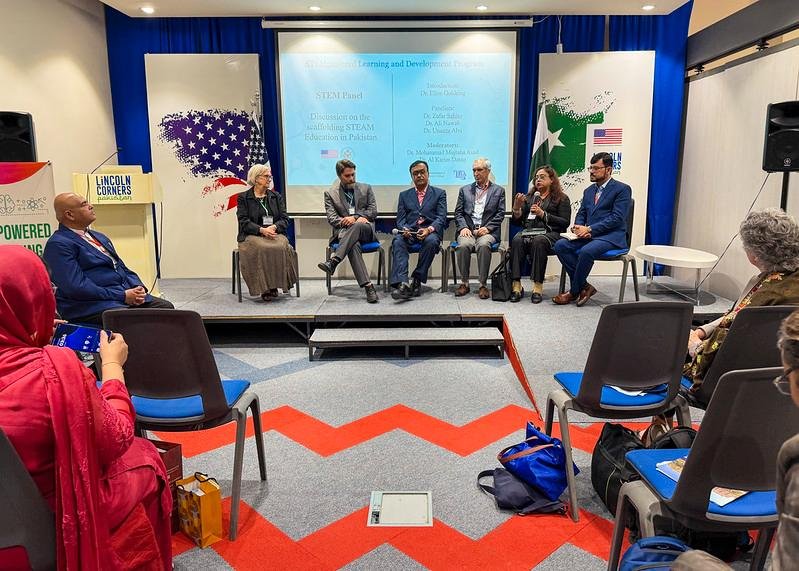Fri 26 Dec 2025 – 06:00AM
It’s part one of the festive double-header as Nottingham Panthers travel to Sheffield Steelers in the Elite League (16:00 face-off).
Tonight’s game is sold-out as is tomorrow’s match between the two sides at the…

Fri 26 Dec 2025 – 06:00AM
It’s part one of the festive double-header as Nottingham Panthers travel to Sheffield Steelers in the Elite League (16:00 face-off).
Tonight’s game is sold-out as is tomorrow’s match between the two sides at the…

Rhea Seehorn has had a hell of a year. For years she had garnered a reputation as a great underappreciated talent, but that has all changed now thanks to Pluribus. A series about one of the only people on Earth not to have their minds taken over…

James GallagherHealth and science correspondent
 James Gallagher
James GallagherIs curing Alzheimer’s disease an impossible challenge or can we get there?
To find out I’ve been invited to watch brain surgery at the…

The take-up of sustainable aviation fuels is on course to fall short of the UK government’s first annual mandate, official figures suggest.
Production data published by the Department for Transport (DfT) covering most of 2025 shows that sustainable fuels (SAF) only accounted for 1.6% of fuel supplied for UK flights – 20% less fuel in volume than the 2% needed to fulfil the requirement.
The government introduced the mandate in January, which requires suppliers to hit targets for SAF – which the industry has argued is important for cutting its carbon emissions – within the overall UK aviation fuel mix.
Themandatory target rises sharply from 2% in 2025 to 10% in 2030 and then to 22% in 2040, including the use of second-generation fuels that are seen as more sustainable in the long term.
So far, the supply of SAF has been exclusively produced from recycled cooking oil from Asia, predominantly China, the DfT figures showed.
The data shows that a little more than 160m litres (35m gallons) of SAF was used, out of 10bn litres of jet fuel burned in UK flying until early October.
The DfT said the time needed for verification meant that the figures were provisional, and final figures for the year were not expected to be published until November 2026. A spokesperson for the department said: “These figures do not present the full picture. SAF volumes are continuously rising and not all suppliers have reported on the fuel they’ve supplied.”
Planes burning SAF still emit equal amounts of CO2 in flight, but the net carbon footprint is calculated as far lower because of how SAF is produced, compared with normal jet fuel. Although many scientists and environmental groups remain deeply sceptical that it can be delivered, production and uptake of SAF is seen as the only way for commercial, and particularly long-haul, aviation to reduce its emissions.
While the government has backed aviation as a driver of economic growth and granted permission for airports including Gatwick and Luton to rapidly expand, ministers have promised to consult the Climate Change Committee over plans to build a third runway at Heathrow.
The aviation minister, Keir Mather, told an industry conference in London earlier this month that Heathrow expansion would still have to meet Labour’s four tests, including reducing its climate impact, but that decarbonisation would be “a licence for growth”.
He said that SAF represented the biggest opportunity, and the government’s SAF bill, which is passing through the House of Lords, “will deliver the revenue-certainty mechanism that you called for – a guaranteed price for SAF that reduces risks for investors and raises confidence for producers”.
Heathrow airport has pushed the uptake of SAF with an incentive scheme that cuts landing charges for airlines using cleaner fuel. It expects to meet its own target of 3% SAF use over the course of 2025.
However, airlines have fewer available supplies outside larger hub airports, and have questioned whether future mandates can be met – especially when costlier second-generation and power-to-liquid SAF, yet to be produced at scale, are mandated.
The UK has progressed further than most in global aviation. The international airlines body Iata recently warned that growth in production worldwide was stalling, with SAF supplying only 0.6% of total jet fuel consumption in 2025, and forecast to increase to 0.8% in 2026.
Iata’s director general, Willie Walsh, criticised the mandates, adding: “If the objective is to increase SAF production to further the decarbonisation of aviation, then they need to learn from failure and work with the airline industry to design incentives that will work.”
Duncan McCourt, chief executive of the air industry body Sustainable Aviation, said: “These provisional figures show the UK is using significant quantities of SAF and we remain confident that the mandate will be met and UK aviation will use increasing quantities of SAF in the years to come.”

Karachi (TDI): U.S. Mission in Pakistan, in partnership with Vanderbilt University (Tennessee, USA), marked the completion of the STEMpowered project, a $294,000 initiative that brought U.S. teaching and leadership expertise to strengthen STEM…

A record-breaking 93,442 fans have filled the Melbourne Cricket Ground on Day 1 of the NRMA Insurance Boxing Day Ashes Test between Australia and England, marking the highest crowd ever recorded for a cricket match at the…

A record-breaking 94,199 fans have filled the Melbourne Cricket Ground on Day 1 of the NRMA Insurance Boxing Day Ashes Test between Australia and England, marking the highest crowd ever recorded for a cricket match at the…

1Wisconsin Spine and Pain, Sheboygan, WI, USA; 2Austin Spine Surgery, Austin, TX, USA
Correspondence: Michael Jung, Wisconsin Spine and Pain, 2124 Kohler Memorial Drive Suite 110, Sheboygan, WI, 53081, USA, Email [email protected]
Purpose:…